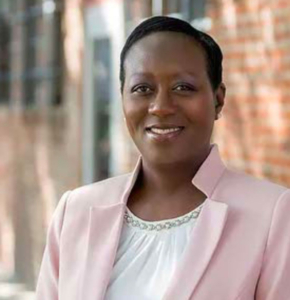How Do Organizations Follow Through on Statements of Racial Solidarity?
By Monique Davis, Founder/CEO, Access and John Irvine, Director of Client Success
Last May, George Floyd was cruelly murdered by a Minneapolis police officer. Based on the lynching report from the Equal Justice Institute, he is one of more than 6,500 Black victims of white supremacist violence that has persisted since the end of the Civil War.
With George Floyd’s death, many for-profit and non-profit organizations expressed support for a racial reckoning. Some groups have done visible follow-up that shows their continued commitment. Other organizations have become distracted by the pandemic, the recession – even survival. So how to maintain that spark of social justice engagement?
Here are nine actions that can focus an organization’s commitment. Properly implemented, they can produce lasting results so team members feel included. Some practices may have been done; others could be worth a second look:
Understand racial equity is not a box-checking exercise. Team members will take this seriously when they see the organization demonstrate commitment. Accountability maximizes progress–when specific goals, deadlines and persons responsible are tracked. Tying managers’ compensation to results has been shown to be effective in sparking action.
Incorporate racial justice into strategic planning. Whatever the level of commitment, promoting racial equality deserves a place in strategic planning alongside more traditional functions such as HR and marketing. This can improve the success and cost-effectiveness of promoting racial justice across the organization. Leaving it vague and detached from operations gives the effort two strikes against it. Connect racial equity work with the organization’s mission, vision and values. Any of the actions below should be aligned with long- and short-term planning.
Set up a process for listening. Team members of color are hurting. Given the year’s events, there’s no way around it. People of Color deserve a forum where they can be heard by colleagues and leadership. Organizations that foster such arrangements demonstrate compassion and empathy. The harshest pains are the ones that aren’t shared. Use the learnings from these Employee Resource Groups to inform a company-wide racial equity plan.
Identify champions among senior leadership. Although the process should not be top-down, initiatives for a fairer workplace won’t succeed without supporters in high places. Co-champions can inspire more engagement than just one leader.
Encourage learning at every level. Training, reading, guest speakers, open forums, book groups all can be a way to center learning and to share the facts of history. Again, active involvement by senior leadership can improve engagement by team members. Acknowledging history can set the stage for healthier dialogue.
Audit HR functions for fairness—especially recruiting, retention and promotion processes, performance reviews, even professional development budgets. Numbers don’t lie. Look at each function through a racial equity lens. Complete a pay equity analysis to put compensation on a fairness track.
Don’t make this unpaid work for employees of Color. They are not responsible for educating their colleagues. Make sure the heavy lifting isn’t left to unwilling or even neutral team members. Certainly HR can take the lead, but this should be paid work—not volunteer.
Like any strategic initiative, racial equity needs investment. Scores of studies show how institutions perpetuate racism. Does the organization see racial equity as an important value or a passing trend this year, gone the next? The answer will guide the level of investment, engagement and success. If leadership sees diversity efforts as unfunded window dressing, disappointing results are virtually guaranteed.
Accept the reality of systemic racism; identify it and work to banish it. Nearly half of Americans (47%) cited generations of systemic racism for creating conditions blocking Black Americans from advancement, according to a Nationscape survey. Skeptics can dig into the research and then make systemic equity issues a part of the organization’s fairness initiative.
If an organization needs a different approach, get help and develop a tailored to-do list. Inaction or indifference guarantees the organizational culture will suffer and costs will rise. That’s because turnover will surely increase. Meanwhile reputation and market leadership will slip away in 2021’s new reality of racial reckoning.
###

 Monique Davis is Founder/CEO of Access, which provides Diversity, Inclusion and Social Equity training. From financial services to affordable housing development, she has more than 20 years’ experience working with organizations to lead diverse workforces and expand employee engagement.
Monique Davis is Founder/CEO of Access, which provides Diversity, Inclusion and Social Equity training. From financial services to affordable housing development, she has more than 20 years’ experience working with organizations to lead diverse workforces and expand employee engagement.
John Irvine is Access’s Director of Client Success. He has spent 40 years providing social justice, environmental and communication consulting and training to Southern California organizations.
For questions or to discuss any of the above, contact john irvine, email hidden; JavaScript is required


